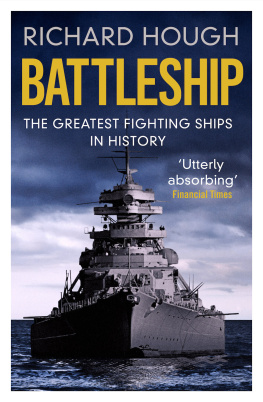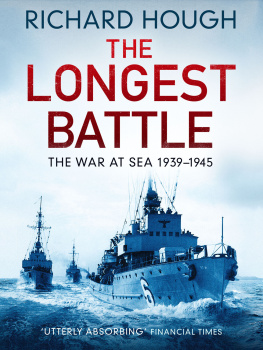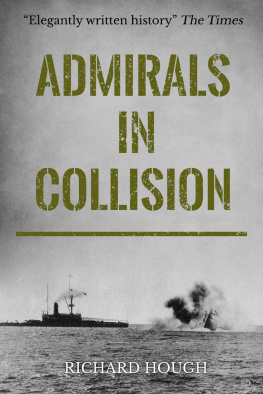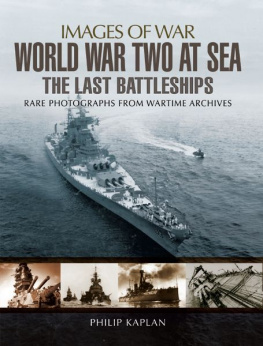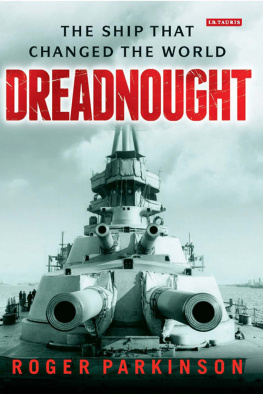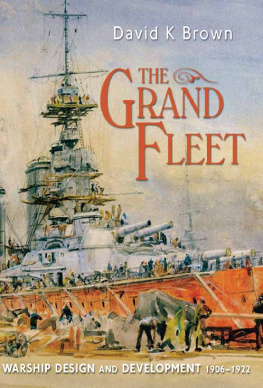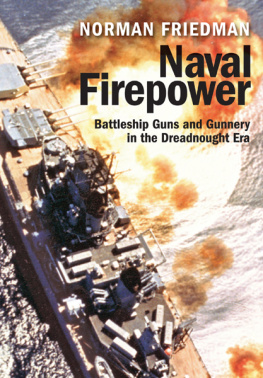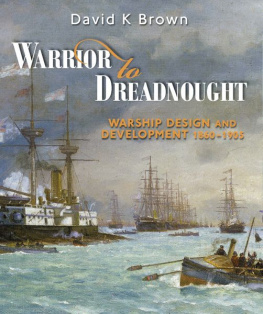Richard Hough - Dreadnought: A History of the Modern Battleship
Here you can read online Richard Hough - Dreadnought: A History of the Modern Battleship full text of the book (entire story) in english for free. Download pdf and epub, get meaning, cover and reviews about this ebook. year: 2003, publisher: Periscope Publishing, genre: History. Description of the work, (preface) as well as reviews are available. Best literature library LitArk.com created for fans of good reading and offers a wide selection of genres:
Romance novel
Science fiction
Adventure
Detective
Science
History
Home and family
Prose
Art
Politics
Computer
Non-fiction
Religion
Business
Children
Humor
Choose a favorite category and find really read worthwhile books. Enjoy immersion in the world of imagination, feel the emotions of the characters or learn something new for yourself, make an fascinating discovery.

- Book:Dreadnought: A History of the Modern Battleship
- Author:
- Publisher:Periscope Publishing
- Genre:
- Year:2003
- Rating:4 / 5
- Favourites:Add to favourites
- Your mark:
- 80
- 1
- 2
- 3
- 4
- 5
Dreadnought: A History of the Modern Battleship: summary, description and annotation
We offer to read an annotation, description, summary or preface (depends on what the author of the book "Dreadnought: A History of the Modern Battleship" wrote himself). If you haven't found the necessary information about the book — write in the comments, we will try to find it.
Dreadnought: A History of the Modern Battleship — read online for free the complete book (whole text) full work
Below is the text of the book, divided by pages. System saving the place of the last page read, allows you to conveniently read the book "Dreadnought: A History of the Modern Battleship" online for free, without having to search again every time where you left off. Put a bookmark, and you can go to the page where you finished reading at any time.
Font size:
Interval:
Bookmark:
DREADNOUGHT
Richard Hough
Richard Hough 1965
Richard Hough has asserted his rights under the Copyright, Design and Patents Act, 1988, to be identified as the author of this work.
First published 1965 by Michael Joseph Ltd
This edition published by Endeavour Media Ltd in 2019
To the late Dr Oscar Parkes
O.B.E., Ass. I.N.A.
who should have written this book.
Table of Contents
Introduction
The writer of this introduction can remember visiting Bonifacio in Corsica in early 1930 and entering into conversation with an old gentleman sitting in the winter sunshine, looking down at the strait with Sardinia sharply visible beyond. The old gentleman told me that years ago, many years ago, he had watched a big English ship of war turning circles in the strait, circling round and round for no apparent reason, and missing all the navigational hazards by mere hairbreadths. He could not understand why she was doing this; he watched her straighten herself up and steam out of the strait, and he still was unable to offer any explanation for why she had indulged in those curious and dangerous manoeuvres. My suggestion that he had been witnessing some incident in the submarine campaign of 1917 was turned aside; this had happened many, many years before 1917, in peacetime, and she was a great big ship full of big guns. I was inclined to discount the tale, thinking of how it could have been distorted in an old mans memory during twenty-five years. Only much later did I hear that H.M.S. Dreadnought , during her shakedown cruise after commissioning, had experienced steering trouble in the Strait of Bonifacio, and the old gentleman, watching her turning like a saucer, as Mr. Hough quotes in this book, had witnessed an incident that with a slightly different ending might have changed history.
For in a sense the eyes of the world were on H.M.S. Dreadnought even though the old gentleman was the only person to witness these freakish manoeuvres. The announcement of the details of her design had caused a great sensation in the admiralties of the world. In England the political repercussions had been very marked; the new Liberal administration, dedicated to peace, retrenchment, and reform, found itself responsible for one might almost say saddled with the most deadly fighting machine ever launched in the history of the world. There was a considerable disturbance of naval sensibilities as well. Conservative minds in the Royal Navy and they were many withheld approval of the innovations embodied in the Dreadnought ; they were doubtful about the abandonment of the secondary armament, about the adoption of turbines, and most decidedly they did not approve of the innovation of berthing the officers forward officers had berthed aft in every navy as far back as the Battle of Salamis. Nor did they approve of Admiral Sir John Fisher, who was responsible not merely for the Dreadnought but for a series of sweeping reforms in the Royal Navy along every line. Fisher had a great many enemies; the Dreadnought had many critics.
If in the course of her gyrations in the Strait of Bonifacio which were due to errors of design in her novel double rudders which could be, and were, largely remedied she had touched on a rock, many people would have been delighted. If she had run hopelessly aground, wrecked herself completely, the consequences might have been incalculable. Public opinion in England, in the reaction from the high hopes built up around the ship by Fishers adroit handling of the press, would not have stopped to consider that the disaster was the result merely of a badly designed pair of rudders. The all-big-gun armament, the turbine engines, the increased displacement, all would have been condemned in a single convulsion of disappointment. Fisher would have been forced to resign, and all his followers would have found themselves powerless to influence policy. The Liberal Government might have found itself in difficulties.
England would have reverted as a result (at least temporarily) to the building of battleships with four big guns and a varied secondary armament. It is just conceivable that the German Government (faced otherwise with the necessity for rebuilding the Kiel Canal) might have gladly followed the British example. The intensity of Anglo-German naval competition might not have reached the same pitch, for comparison of the number of Dreadnoughts was so simple a calculation that the popular press in both countries could use it to exacerbate public opinion, and Englands vast pre-Dreadnought fleet would have made German competition far less effective.
But that is a wild flight of fancy; Jutland would still have been fought, even if with fleets not generically different from those that fought at Tsushima. In any case, the Dreadnought type, as Mr. Hough points out, was taking shape in many minds besides Fishers. If England and Fisher had not built the first Dreadnought, someone else would have done so soon enough. Such a ship invincible, practically omnipotent had been discussed in many conferences of naval designers but had been dismissed as wildly impracticable because she would cost quite a million pounds and would have to displace at least twenty thousand tons, and no nation would venture on such folly naval designers, despite their peculiar opportunities for learning, had a higher opinion of national wisdom than events were to justify.
It should be remembered as well that the development of the Dreadnought like that of the submarine and the torpedo progressed with the advances in scientific and technological research. To fire an instantaneous salvo of four twelve-inch guns called for the employment of electrical equipment of considerable complexity even before director firing was devised; to estimate the range at which to fire needed optical instruments of the utmost refinement, and to make the necessary deductions from the successive falls of shot called for calculating machines of an efficiency hitherto undreamed of. Military requirements stimulated scientific research but it was at least equally true that technical and scientific invention stimulated the evolution of new military concepts. In our own day the guided-missile cruiser has been made possible only by the perfection of the process of electronic miniaturization.
The most extraordinary thing Fisher did was not to plan the Dreadnought , but to build her to gain the consent of the government, to gain the cooperation (however grudging) of his service, and to carry the construction through with a rapidity and a secrecy that astonished the world; the dismay and irritation felt by foreign powers was, in his opinion, not the least of his rewards. We have seen the American public similarly dismayed in our own lifetime when it was first informed that the Soviet Government had perfected an atomic weapon.
Fisher was a man of such remarkable ability, of actual genius, that it is with acute disappointment that we encounter his limitations. He could see no virtue in moderation; on the contrary, he looked upon moderation as a vice symptomatic of weakness. In the material field this meant that his creations were developed beyond the limits of practicability, specialized (like the dinosaurs with which they were often compared) until they could not face more restrained rivals. If speed were desirable, more speed was more desirable still; if big guns conferred an advantage, still bigger guns conferred greater advantages. The law of diminishing returns was forgotten, and the eventual result was the construction of huge light cruisers like Courageous , which, as battle was to prove, combined the minimum of value with the maximum of cost. Fishers advocacy of ships in which overmuch was sacrificed in exchange for gunpower and speed had been evinced from the start, in the first battle cruisers and in the early Dreadnoughts. He was deficient in what may be called critical imagination. The plans he conceived he executed superbly, but he was incapable of examining those plans from the opposite point of view. He could not admit the possibility of the existence of flaws in those plans, so that there was no chance of his doing anything to eliminate them. He would not consider the chance, in the misty North Sea and the confusion of a battle, of an ordinary light cruiser slipping in under the guard of the big guns of Courageous and finding before her a target ideal for the employment of her six-inch guns. He could advocate a plan to Copenhagen the German Navy while losing sight altogether of the irreparable damage any such attempt would inflict upon England. He could contemplate landing an army on Germanys Baltic coast without regard for the difficulties of taking it there, and forgetful of the German statesmans reply to a question as to what he would do if a British army landed on the German coast. He would send the police to arrest them, he said and the reply was hardly more grotesque than the original plan.
Next pageFont size:
Interval:
Bookmark:
Similar books «Dreadnought: A History of the Modern Battleship»
Look at similar books to Dreadnought: A History of the Modern Battleship. We have selected literature similar in name and meaning in the hope of providing readers with more options to find new, interesting, not yet read works.
Discussion, reviews of the book Dreadnought: A History of the Modern Battleship and just readers' own opinions. Leave your comments, write what you think about the work, its meaning or the main characters. Specify what exactly you liked and what you didn't like, and why you think so.


